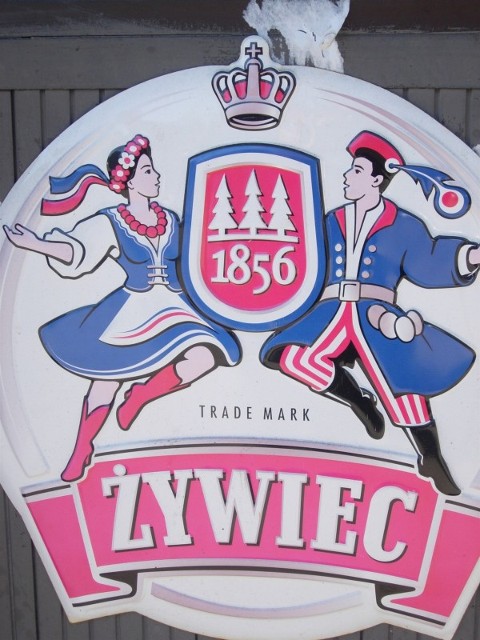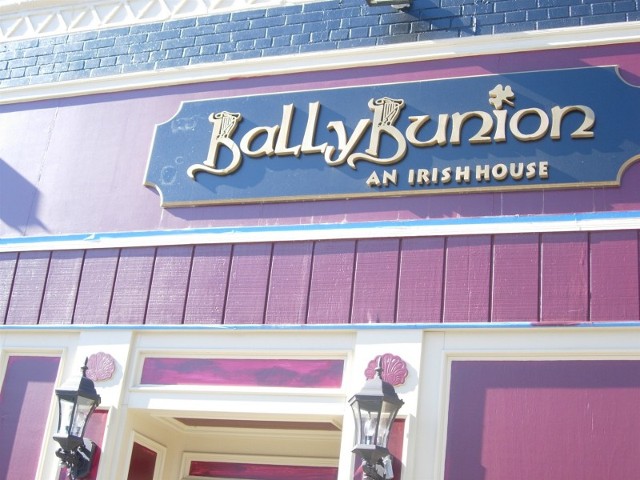Bay Ridge- Economy
From Decoding New York
| Introduction |
| The East Village |
| * Evolution |
| * Here v. There |
| * Economy |
| * What's Real |
| Bay Ridge |
| * Evolution |
| * Here v. There |
| * Economy |
| * What's Real |
| Comparison |
| * Photo Gallery |
| * Sources
|
Bay Ridge’s economy is a perfect example of one that caters to the needs of local residents; essentially, it can be separated and observed by ethnicity, as each group generally targets people of the same culture—some more than others.
While many think the original Irish and Scandinavian cultures that founded and shaped Bay Ridge into the productive neighborhood it became, are slowly fading away with the influx of newer immigrants, there are still traces of these groups present. Besides the dozens of Irish pubs that stand on the many corners of Third Avenue, there is even a traditional Irish store, “Irish Village”, that is considered by many to be a landmark, providing Irish goods that range from homemade kilts to McVitie’s Digestive Crackers. Similarly, there are still Norwegian bakeries that provide fresh kolachies and danishes for many Brooklynites who happily support their Scandinavian roots.
Although the Italian population first emerged here a century ago, their presence is still strong with Italian restaurants and grocery stores chiefly making up Bay Ridge’s bustling Third Avenue. As I was admiring the front window of one of these stores, a cheery Sicilian butcher smiled broadly and beckoned me in to take pictures of his store, “The Piazza Mercado”, showing me the different meats, pastas, breads, olives, and cheeses that define Southern Italian culture. Down the avenue there are dozens of authentic pizzerias, as well as long-standing restaurants such as “Areo” and “Mambo Italiano”, that specialize in Northern Italian cuisine. On 85th Street and Third Avenue, the Italian flag waves in the wind beside the several buildings that were renovated to resemble Roman structures. Due to this large Italian populace, there are many Roman Catholic churches and religious supply stores such as the “Catholic Shop” just off Fifth Avenue.
Perhaps the most prominent ethnicity here, however, immigrated to this country much more recently than the others. Bay Ridge’s Fifth Avenue is dominated by Arab culture. This is apparent not only in the food, but in the signs, dress, and language spoken that give this neighborhood a flavor that resembles Cairo rather than Brooklyn. Not only are there countless grocery stores that carry items familiar to many Arabs like rose water, hummus, labneh, and pastry-making tools, but there are law offices, doctors clinics, travel agents, clothing and jewelry stores, money-transferring offices, and even churches that all bear signs in both Arabic and English. Going into “Tarboosh” (Arabic for fez), one of the many Lebanese cafés, I am given a tour by the owner who has decorated it in traditional décor with clothing, hats, instruments, and of course, “argeelehs” (water pipes) that are native to his homeland. Other Lebanese restaurants such as “Le Sajj” have belly dancers on weekend nights that participate in the native Dabkeh dance with many of the patrons. In addition, the beauty salons here accommodate religious Muslim women, usually having a private room in the back so they are not visible from the front windows without their hjab, their headscarves. These salons also boast the popular Egyptian method of facial hair removal: “threading”, with signs in both Arabic and English inviting people into their shops. Other stores along Fifth Avenue carry Arabic movies, music, newspapers, magazines, and calling cards, used by many whose families still live back home. In addition, there are a series of Arabic churches scattered throughout the neighborhood, mainly of the Eastern- Orthodox and Lutheran persuasions with welcoming signs in Arabic that surprise many who are not familiar with the Christian Arab community.
In addition to these, there are substantial Greek and Polish communities in Bay Ridge as well, that contribute to this neighborhood in more ways than one. While I was walking down Third Avenue, a thrift store with a Greek awning caught my attention. Upon entering the tiny room, an elderly lady ushered for me to follow her inside where I found an altar, several pews, and pictures of saints considered holy in the Greek Orthodox religion all around me. She offered me mousaka and showed me pictures of all the relief work her organization had done both in the community and around the world, visiting a range of places from nursing homes and hospitals in Bay Ridge, to countries like Nicaragua, Serbia, and India. Being a devout Orthodox Christian, she explained to me the importance, taught in her religion, of helping those less fortunate. This tiny store is among the many Greek influences on Bay Ridge, which range from Greek schools, churches, cafes—the most notable among them being Omonia, who is famous for catering the food in the hit movie “My Big Fat Greek Wedding”—pharmacies and grocery stores. In addition, the Greek Orthodox Church of Bay Ridge has become famous for conducting a ceremonial candle-lit walk every year on Good Friday, in which a great deal of Third Avenue is shut down for this midnight procession. The Polish community has grown in recent years, with the addition of many groceries and restaurants to the area. While not as apparent as the other communities, the Polish grocery store which I visited was packed with native-tongue speakers waiting on line for kielbasa, and skimming the Polish magazines and newspapers on the surrounding shelves.
There are other many other cultures that contribute to Bay Ridge’s unique ethnic wealth. Although the “Languages Spoken in NYC Census” (as of 2000) documents Korean, Chinese and Spanish speaking populations in Bay Ridge, their presence seems more subdued than the other communities. However, there are definite traces of these cultures, as can be seen from the several Korean Churches along Fourth Avenue, the rise of Chinese groceries and hair salons, Korean and Chinese restaurants, Spanish restaurants—most famously the decades-old Spanish restaurant “Sancho’s” which proudly has a Spanish flag out front—and Mexican delicatessens as well. Combined with the trendy French cafes, lounges, and boutiques that line Third Avenue, Bay Ridge is truly worth the trip on the R train, with a variety of shops and treats that can satisfy any appetite from Spain to China.

